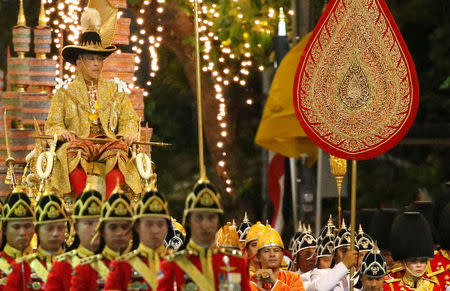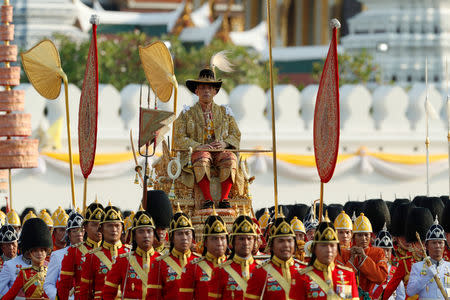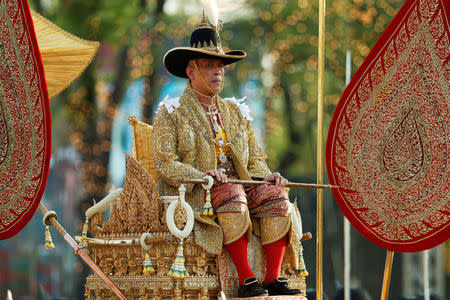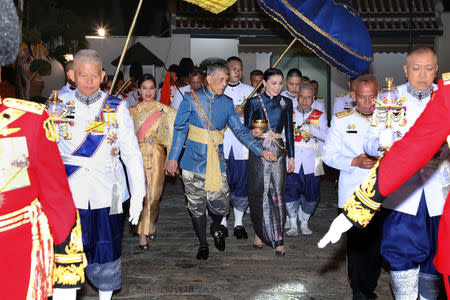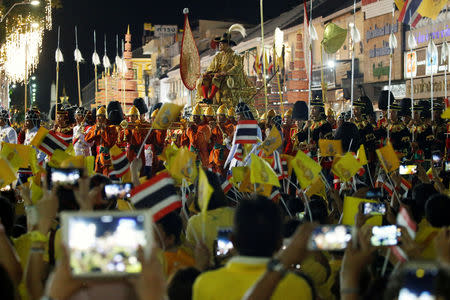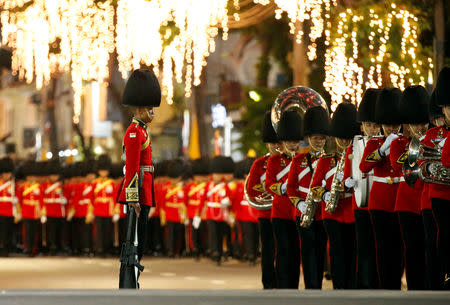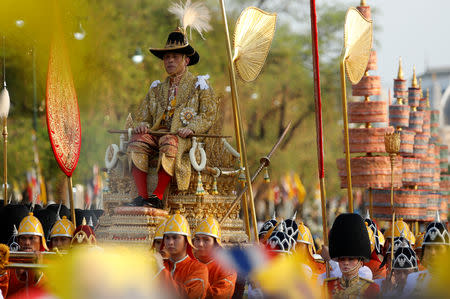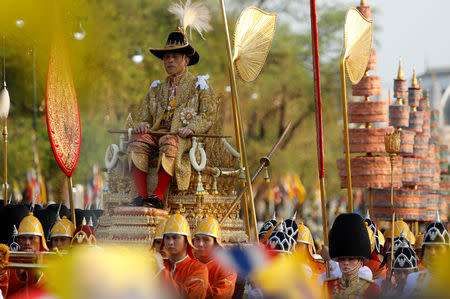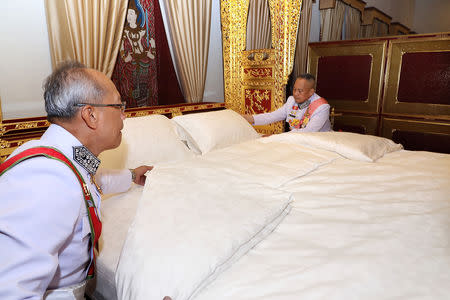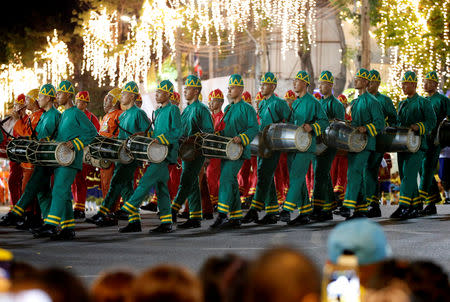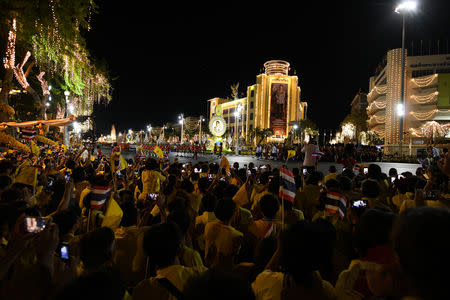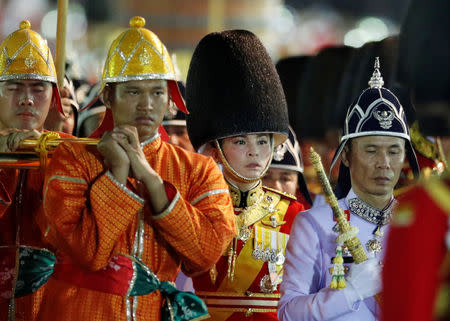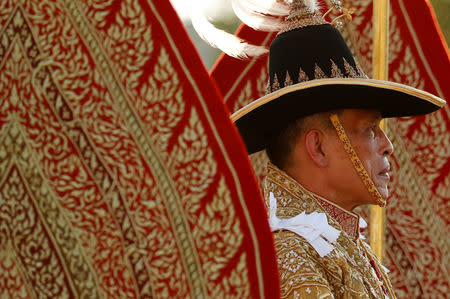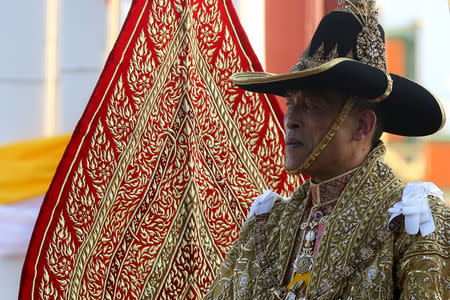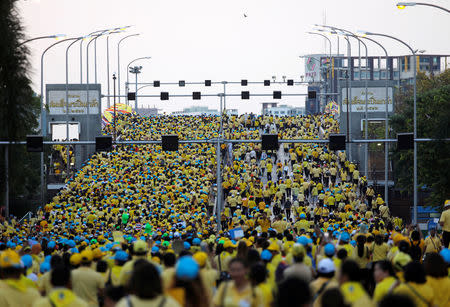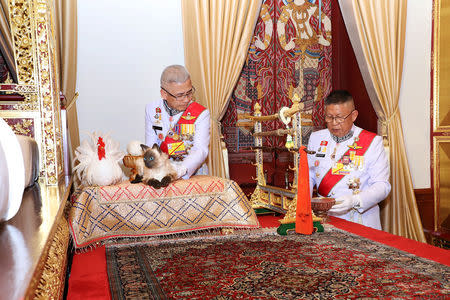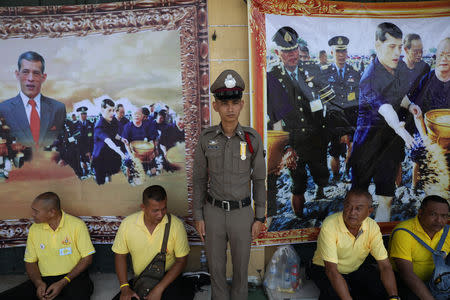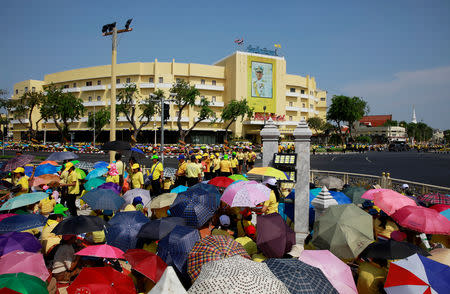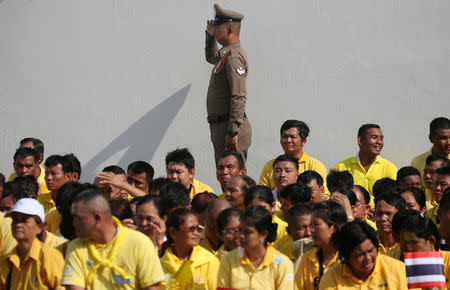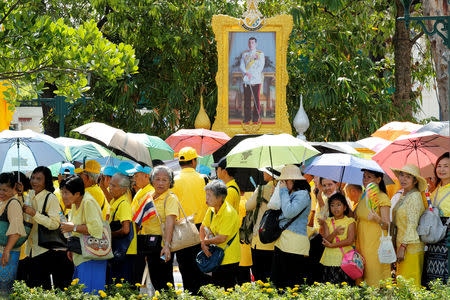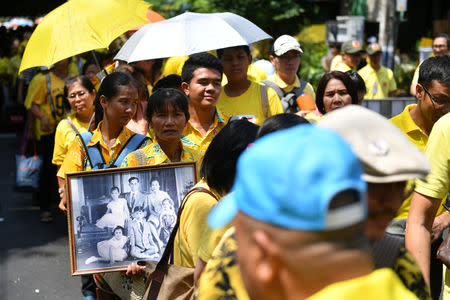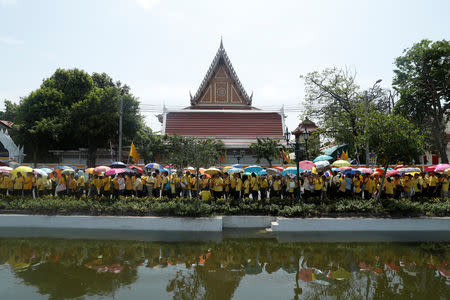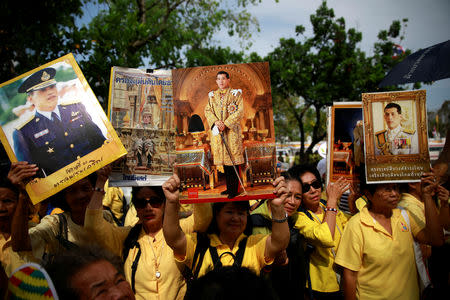Newly crowned Thai king carried through Bangkok in royal procession
By Panu Wongcha-um and Kay Johnson
BANGKOK (Reuters) - Thai King Maha Vajiralongkorn visited Buddhist temples and greeted his subjects for the first time since his crowning in a royal procession around the old quarter of Bangkok on Sunday, as part of intricate coronation ceremonies held over three days.
"Long live the king!" shouted well-wishers who lined roads for hours under the blazing sun and well into the night, hoping for a glimpse of the constitutional monarch who is revered in Thai culture as a living deity.
King Vajiralongkorn, carried through the streets by 16 men bearing his gilded palanquin, visited three royal temples, starting with Bovoranives, where he spent 15 days ordained as a Buddhist monk in 1978.
He paid homage to the temple's main Buddha image as well as the relic and cremated remains of his father, King Bhumibol Adulyadej.
Clad in gold-embroidered vestments and wearing the same black military-style hat that his father wore at his coronation 69 years ago, the king also visited Rajabopidh temple, the abode of the current Buddhist supreme patriarch, and Chetuphon temple to pay respects to the relic of the first Chakri monarch.
Conch shell horns heralded the parade, which was accompanied by two horseback cavalry soldiers, a military marching band and royal guards in a mixture of ancient Thai and modern Western-style uniforms.
Spectators all wearing yellow, the colour associated with the king, gathered from early morning along the 7 km (4 mile) route from the Grand Palace to three royal temples.
Thousands lined the royal procession route well into the evening as fairy lights lit the streets of Bangkok's old quarter.
"I want to see the coronation for once in a lifetime because the last one when it happened I was still very young," Samran Moryaidee, a 77-year-old man, told Reuters.
The Thai government, which is spending 1 billion baht ($31.4 million) on the weekend's coronation ceremonies, has said crowds of at least 200,000 people were expected.
"I feel like I have to be here to show the world just how much we worship the king," said Donnapha Kadbupha, a 34-year-old woman, who had come eight hours early to secure a spot along the procession route.
The government provided free buses for people living outside Bangkok to come to witness the spectacle, and bus and train travel to the site was free in the capital.
ROYAL TITLES
The coronation of King Vajiralongkorn, 66, takes place from Saturday to Monday after a period of official mourning for his revered father, who died in October 2016 having reigned for 70 years.
During the 18 months of his reign so far, King Vajiralongkorn has moved to consolidate the authority of the monarchy, including taking more direct control of the crown's vast wealth with the help of Thailand's military government.
His official coronation comes amid the uncertainty of an unresolved election battle between the government's chief and a "democratic front" trying to push the army out of politics.
On Saturday, the king sat on a golden throne under a nine-tiered umbrella and placed the 7.3 kg golden Great Crown of Victory on his head following an elaborate purification ritual.
On Sunday morning, the king granted new ranks and titles to members of the royal family.
The monarch was joined by new Queen Suthida after a surprise announcement three days before the coronation that the thrice-divorced monarch had married for a fourth time.
One of the many official titles King Vajiralongkorn is taking is Rama X, or the 10th king of the Chakri dynasty founded in 1782.
CARRIED THROUGH STREETS
For the royal procession, the king was carried through the streets on a gilded palanquin borne by 16 men walking at about 75 steps per minute and stopping to swap out personnel every 500 metres, according to the palace.
More than 1,300 personnel were in the procession.
Sunday's crowds were expected to be the largest yet for the coronation events.
Thai people have been encouraged for the past month by the military government to wear yellow to signify devotion to the monarchy but only in the last few days have people in Bangkok joined in on a large scale. When King Bhumibol died, Bangkok's streets and public transport were a sea of black for months.
Although most coronation ceremonies for Thai kings follow Hindu Brahmin traditions, some Buddhist elements were added by the monarch's great-great grandfather King Mongkut, or Rama IV, because he spent 27 years in monkhood before inheriting the throne, scholars said.
"Because King Mongkut was a monk, he ordered that the procession should visit important Buddhist temples so the new monarch can provide alms to monks," said Tongthong Chandransu, an expert on Thai royal rituals.
Thailand ended absolute rule by its kings in 1932, but the monarchy remains highly revered as the divine symbol and protector of the country and Buddhist religion.
($1 = 31.90 baht)
(Additional reporting by Panarat Thepgumpanat, Jiraporn Kuhakan; Writing by Patpicha Tanakasempipat; Editing by Simon Cameron-Moore, Richard Borsuk and Dale Hudson)
